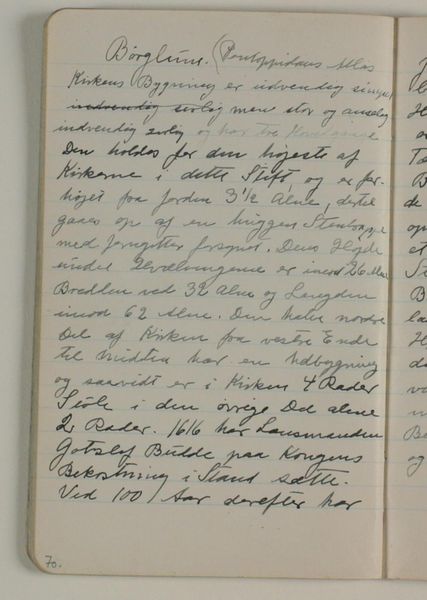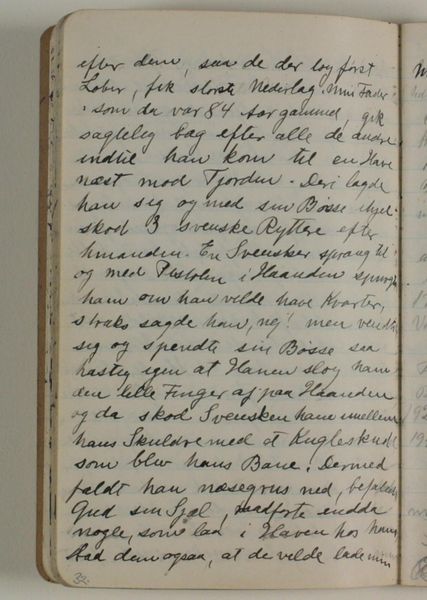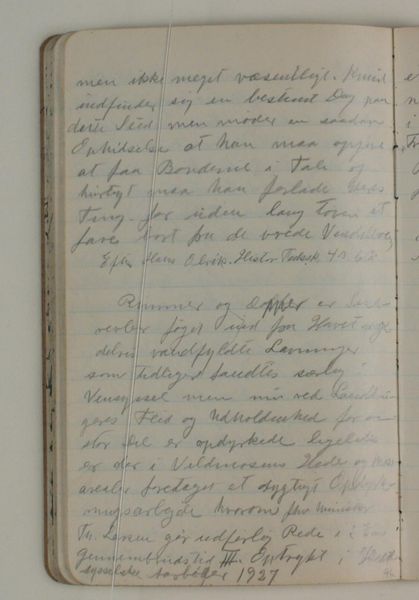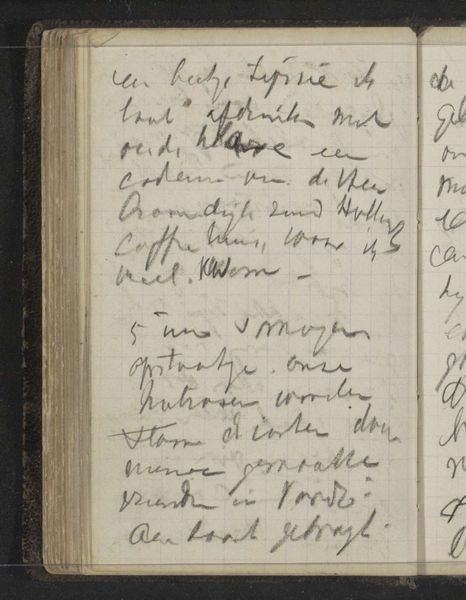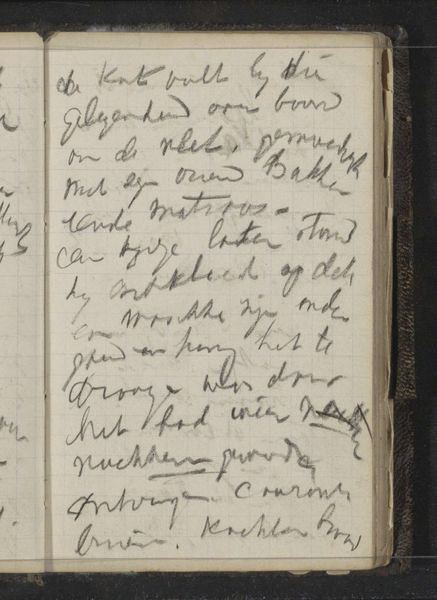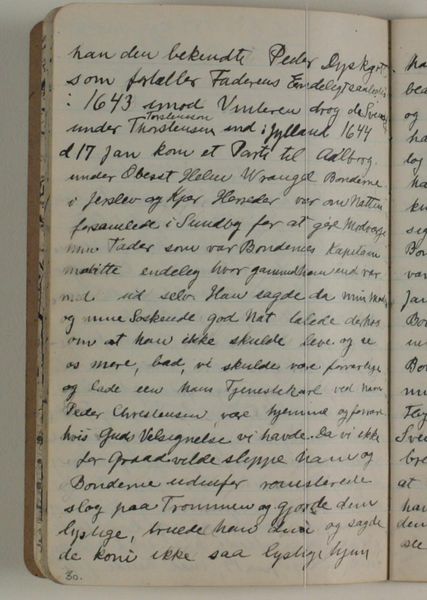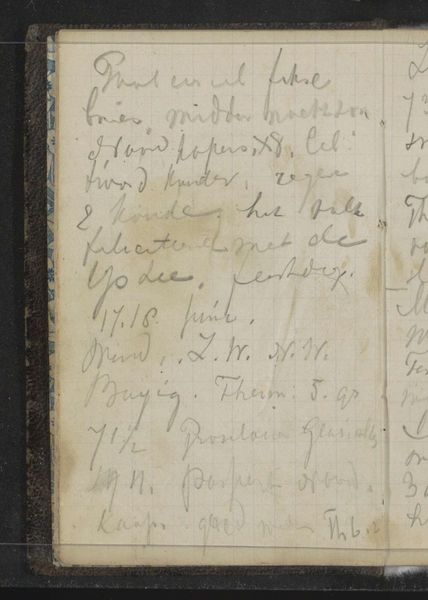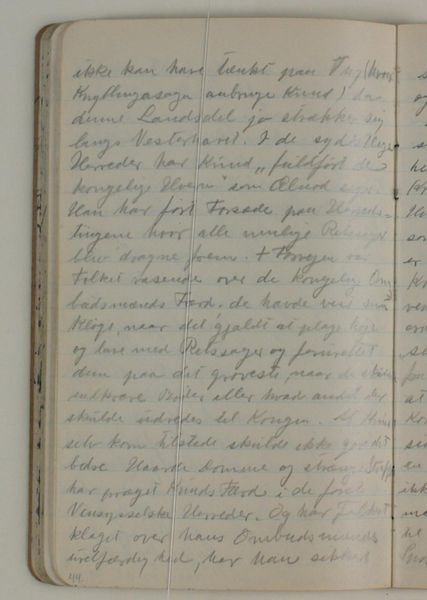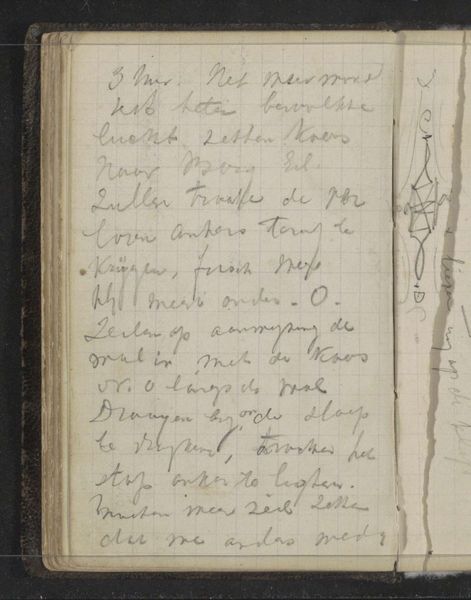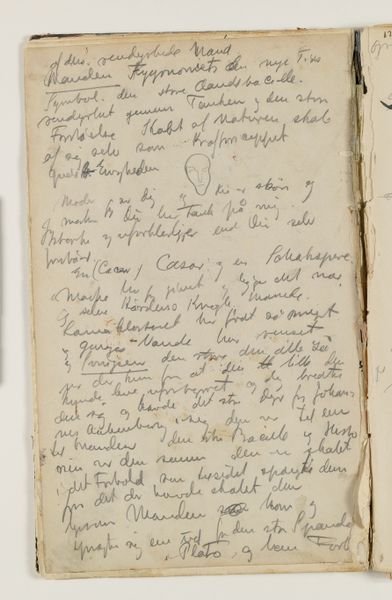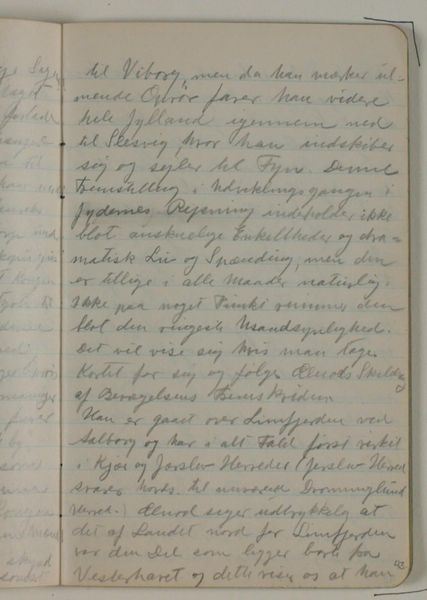
drawing, coloured-pencil, paper, ink, pencil
#
drawing
#
coloured-pencil
#
paper
#
ink
#
coloured pencil
#
pencil
#
sketchbook drawing
Dimensions: 162 mm (height) x 98 mm (width) x 23 mm (depth) (monteringsmaal)
Editor: Here we have Niels Larsen Stevns' "Anvisning på kalkpuds," dating between 1864 and 1941. It's a mixed media work, using drawing, coloured pencil, paper, ink, and pencil, found at the SMK. It's fascinating to see what looks like a page from a sketchbook or journal. The handwritten text gives it an intimate, almost personal feel. What catches your eye, looking at this page? Curator: It's interesting how this "instruction on lime plaster" gives us a glimpse into the practical knowledge valued at the time. It prompts us to consider who this artist was creating for and how their social circles likely placed a high value on resourcefulness, thrift, and artistic craftsmanship. It wasn’t merely about high art; it was about knowing how things were *made*. The sketch also appears functional and purely about craft, which suggests an approach to life where there’s little to no barrier between creative, and utilitarian activities. Do you find any contrast with our concept of ‘fine art’? Editor: That’s a great point! I hadn’t thought about its utility. Well, in many ways, it shatters that idea of fine art being divorced from the everyday. We tend to separate art from the more mundane aspects of life. It blurs the boundaries between art, craft, and just… life. Curator: Exactly! It invites us to reconsider the social hierarchies often imposed upon art forms. By viewing something as humble as a plastering instruction, are we seeing art’s democratization across all social tiers and everyday circumstances? Editor: This is really making me rethink my preconceptions of what "art" even encompasses. Curator: Indeed, these historical remnants can encourage reflection upon our preconceived definitions of “art”. We tend to automatically frame artistic endeavors, frequently overlooking art’s function in shaping and mirroring everyday cultural standards and socioeconomic dynamics of the time.
Comments
No comments
Be the first to comment and join the conversation on the ultimate creative platform.

